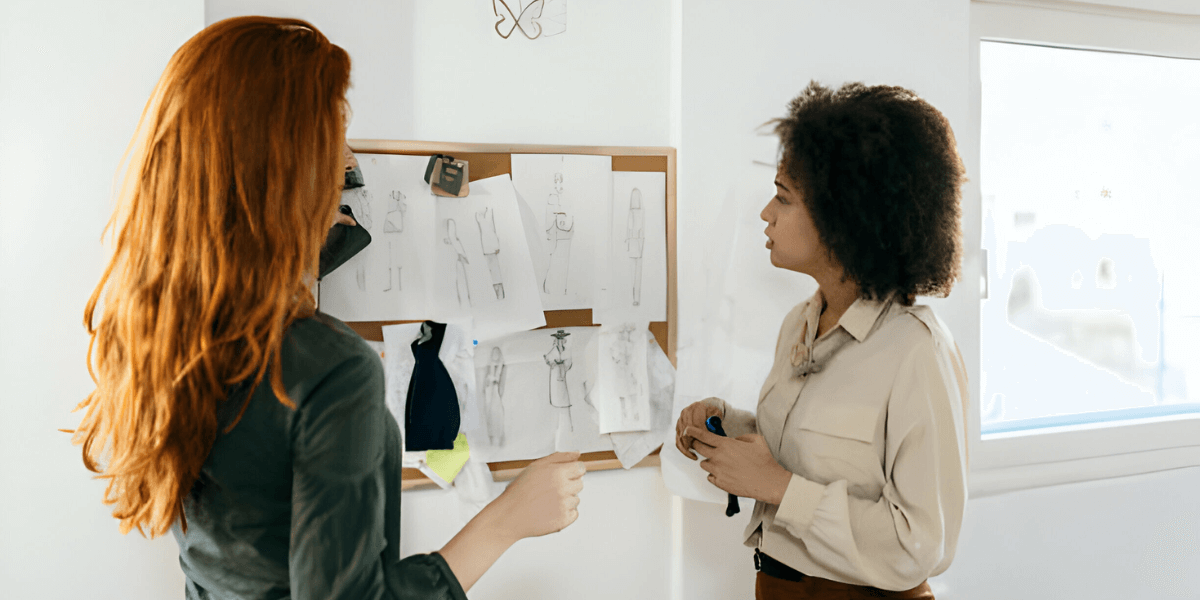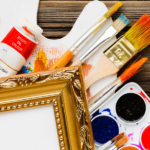Valley of Experts Training Institute Al Garhoud, Dubai – UAE
Unveiling the Art of Garment Design: A Beginner’s Guide to Training

Garment design is a field that deeply interests many people. Of course, not everyone gets to explore their inner fashion designer. However, there is no need to feel disheartened because we are here to help.
In this brief garment design guide, we help you learn everything you need to know as a beginner so that you can fulfill all your dreams. The time to hone your inner designer skills has finally arrived. Let’s get started!
The Complete Garment Design Guide For Beginners
Garment design itself refers to the idea of crafting silhouettes and designs for various garments into a fashion statement and then finding the most efficient way to bring them from paper to reality. Here is the complete step-by-step guide to garment design for beginners:
Select A Theme
The process of garment design can be divided into two distinct stages. The first of these stages is dedicated to the planning of the entire garment design.
1. Do Some Research
Before undertaking any task, you first need to do some research. Without research, you will not know where you want to take the entire project and will end up with another unfinished piece of garment, which could have been a beautiful fashion statement.
So, take the time to browse through the current fashion trends, the latest magazines, and various style aesthetics. Here is where you will get the inspiration for where you want to take your impromptu garment design project.
2. Get Inspiration
Inspiration is an important part of any type of creative endeavor. Inspiration gives you a starting point for your garment designs, so you need to research. You can get inspiration from conventional sources like fashion magazines and trends to unconventional sources like the color pallet of a vibrant bird and the silhouette of a snazzy furniture item.
Once you have gotten a handle on the general vibe of your garment design, it’s time to create a fabulous mood board to keep you on track.
3. Create A Mood Board
Mood boards are the best way to give your vision a face. These mood boards will also keep you on track when you progress to the design execution stage. You can include everything from actual designs to colors, quotes, and even accessories on your mood board. Just remember not to make it super busy, as it could kill your motivation.
1. Brainstorm Ideas
The last step in the planning stage of garment design is to brainstorm actual ideas that you wish to bring to life in the development stage. Here are a few ways you can brainstorm your garment design:
- Identify where you wish to wear the garment you plan on designing.
- See which fabrics look the most enticing.
- Make a list of all the silhouettes that captivate you.
- Determine the colors that will go well with the structure.
- Check to see which type of clothing item you wish to design.
Develop Garment Design
The second stage of this entire process is the execution stage, where all your ideas will be brought to fruition.
1. Select Fabrics
When creating particular designs, you need to be aware of all the properties of various fabrics. If you do not know how your fabric will react to the heat of an iron or glue gun, you can’t possibly go forward with decorating it with rhinestones. So, it’s important to choose all the right fabrics with functionality and color in mind.
2. Make Sketches
Sketching in fashion and regular drawing are two completely different things. When you make sketches of your ideas focusing on the clothes, you tend to ignore the various features of the model and instead make the cloth itself much more detailed.
These types of sketches are known as Croquis, and they help give your drawn clothes a mannequin to be showcased on. We recommend drawing the model figure in two different ways to see how you wish to see your garment draped over an actual body.
The first way is the model in a relaxed pose with their hands at their side, and the second way is their model in an extravagant pose that showcases the design in a unique way.
3. Consider Silhouette
When it comes to garment design, silhouette is what makes the entire look. It refers to the overall structure of a garment, and it plays a vital role in determining how the garment will look on the person wearing it.
When working on your garment, it’s important to consider the silhouette you want to achieve. Do you want a fitted look or a loose and flowing one? Are you going for a structured or relaxed vibe? These are all questions you need to ask yourself before moving forward with the design process.
One way to determine the silhouette is by considering the body type of the person you are designing for. The silhouette of a garment can either enhance or detract from the natural curves and lines of the body. For instance, a fitted dress can accentuate an hourglass figure, while a loose and flowing dress can flatter a pear-shaped body.
Another important thing to consider is the fabric you will be using. Different fabrics drape differently, which can greatly affect the overall silhouette of the garment. For example, a stiff fabric will hold its shape and create a more structured silhouette, while a flowy fabric like silk will create a more relaxed and flowing silhouette.

1. Create Prototype
Now that you have everything covered, it’s time to create a prototype. A prototype is a sample garment that helps you identify any issues or areas for improvement before moving forward with the final product.
To create a prototype, you will need to cut the fabric according to the measurement of your model. Be sure to leave enough seam allowance to make any necessary alterations. You can then sew the pieces together to create a rough version of your garment.
Once you have your prototype, it’s time to try it on and make any necessary adjustments. This is where you can identify any issues with the fit, comfort, or overall look of the garment. You may need to make additional sketches or create a second prototype to address any issues.
It’s important to take your time during this stage and not rush the process. Once you are satisfied with your prototype, you can move forward with creating the final product.
To Wrap Up
Garment design is a fascinating field that requires a mix of creativity, research, and technical skills. Remember, the key to success is to keep practicing and experimenting until you find your unique style and voice as a designer.
If you wish to transverse the unexplored waters of garment design, you can enroll in a course at VOE, a professional training institute with expertise in education and skill development. Who knows, you might just be the next big thing in the fashion industry. Happy designing!







